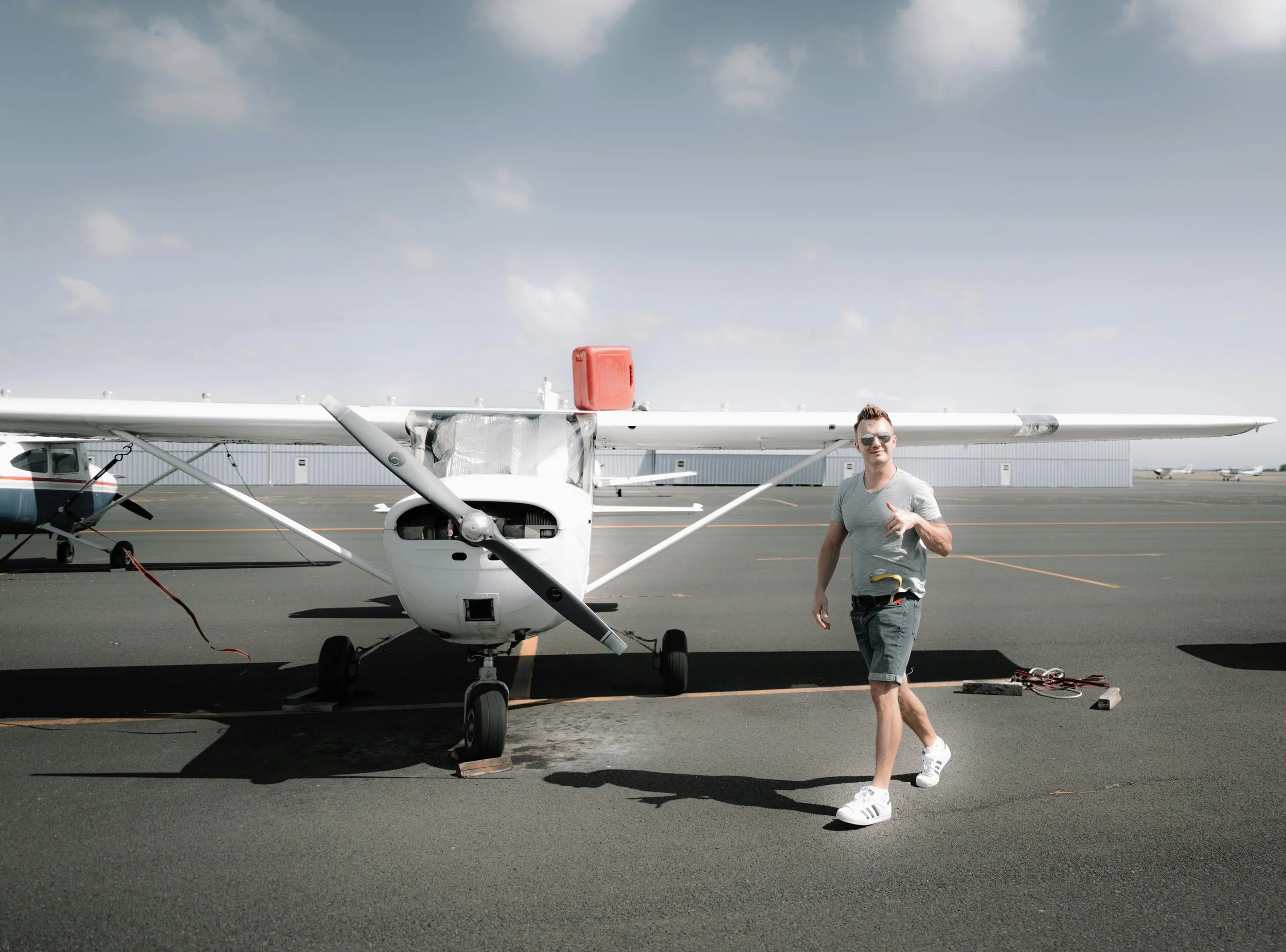Before My First Lesson, I Was a Line Boy
My teachers tried to tell me that I would never be able to make a living by staring out a window. Years later, flying over the Grand Canyon at sunrise in the Captain’s seat of a Boeing 767, I thought of that. I guess I proved them wrong.
But before I ever took my first flying lesson, I was hired by Earl Smith, the owner of Triangle Air Service, to work as a line boy at the Olney-Noble airport in Southern Illinois.
My duties at the airport were various if not always glamorous. I fueled airplanes, swept out the hangar and the office (and then swept it out again when Earl would come in from quail hunting and track mud across the floor). cleaned grease off the bellies of airplanes. I washed and waxed airplanes.
I vacuumed the interior of the airplanes. (Whenever Earl would clip his fingernails in flight, leaving the clippings in the carpet of a plane that I had only hours earlier vacuumed, I would of course have to do it all over again.)
I cleaned bugs off the windows and leading edges of the wings. I put the airplanes in the hangar at the end of the day. I mowed the grass along the runway.
I climbed up the rotating beacon to replace light bulbs. I fed Earl’s hunting dogs and answered the UNICOM – a radio used at uncontrolled fields to provide incoming aircraft with winds and altimeter settings, advise them of any known traffic in the area, and the active runway in use.
Within 2 weeks, I was spending almost all my money on flying lessons. I went up every chance I got. I loved everything about being around the airport. The pilots, the airplanes, the flying stories, watching other students solo for the first time.
It was always nice, I thought, when a newly soloed pilot would have his picture taken and sent in to the local newspaper, the Olney Daily Mail. The same was done for everyone who got their private or commercial license, or instrument rating.
Occasionally, the windsock on the hangar roof would need to be replaced. Texaco, the company that Earl purchased fuel from, provided them at no charge. Naturally, it was my job to take a stepladder up an extension ladder onto the roof, climb to the top of the stepladder (yes, the top of the step ladder, not the next to last step like you are supposed to do – the ladder was too short for that) and remove and replace the windsock.
I completed the task and was relieved not to have fallen off the stepladder and rolled off the roof. Then, after I had put away the ladders and tools, John Schnepper, our chief pilot, came in laughing. I had managed to put the windsock up in the inverted position. The Texaco logo and lettering was upside down. Everyone had a good laugh about that.
Everyone except me, that is. I was 19 years old and far too sensitive about having others laughing at me. I was of course required to go back up and take the windsock off its hoop and put it back on – right side up. I don’t know now why I didn’t see the humor in it and laugh along with them. It was funny. The only explanation I can offer is that, as I said, I was 19 years old and still had not learned to laugh at myself.
Chief Pilot John Schnepper was in his mid-thirties, medium height and build. He had a receding hairline and wore wrap-around sunglasses. He was funny and likeable, yet at times a bit arrogant. When I say that, I don’t mean it in a bad way. John was then and is to this day one of the best pilots I ever saw. Never mind that he was only flying Piper single and occasionally twin-engine airplanes. He could land the space shuttle if you put him in the pilot’s seat. So, a bit of arrogance is okay if you can back it up. He wasn’t one to go around bragging. He was good, and he knew it. And we knew it, too.
If I had one wish for John, it would be that he would have been blessed with the opportunities that later became available to me as I moved forward in my flying career.
